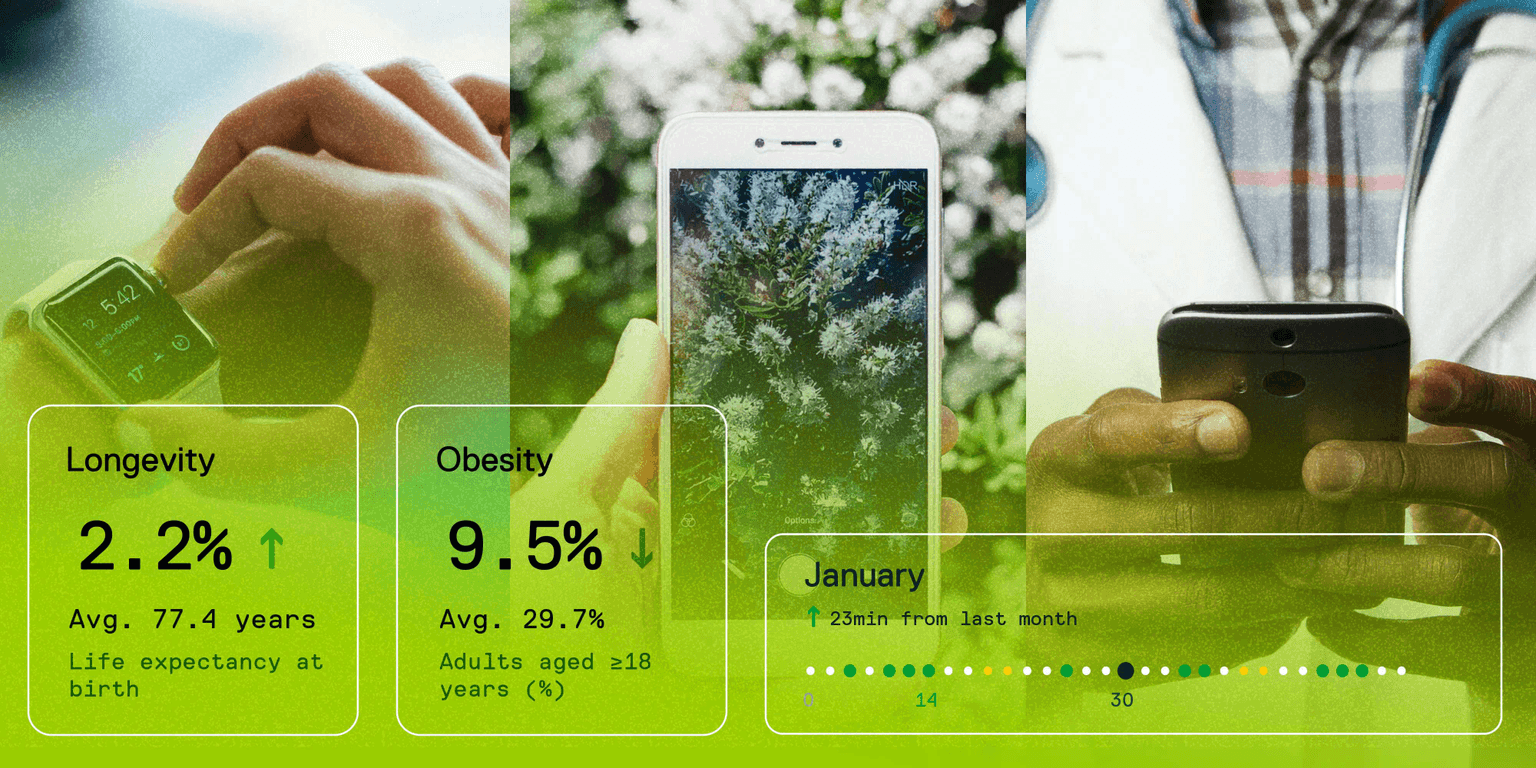The Future of Health Care is Environmental
Our genetics can shape our health, but so can our social and physical environments.

Key Points
- Where we live — the air we breathe, the water we drink, the environments around us — materially affects our health.
- Public health systems are grappling with how to collect and interpret environmental data.
The Future of Health Care
The Danish Twin Study established that only about 20% of how long the average person lives is dictated by genes, while about 80% is influenced by lifestyle and environment. Where we live — the air we breathe, the water we drink, the natural environments around us — materially affects our health.
Our genetics can shape our health, but so can our social and physical environments. Social determinants of health include income, poverty, and social activities. The social environment includes considerations like crime rates and neighborhood affluence, while the physical environment includes air or water quality, access to nature and healthy foods, and other environmental pollutants and stressors. These factors are closely related. For example, a park with trees can filter and improve air quality, provide social activity, and also indicate the absence of industrial facilities in the vicinity.
Dr. Risa Lavizzo-Mourey, president of the Robert Wood Johnson Foundation has emphasized the connection between location and lifespan: “We know that a child’s life expectancy is predicted more by her ZIP code than her genetic code.” Indeed, where one is raised has a dramatic influence on one’s longevity.
So how has our healthcare system responded to this evidence? In the United States, we spend much more on the delivery of clinical services, often at the end of life, than we do on public health. Public health focuses on improving the health of a whole population and often on preventing illness rather than responding to it. In other words, public health considers the determinants of health: social and physical environments.
The causes of disease are often more strongly rooted in factors outside the health care system — where we live, what we eat, the air we breathe. But the health care system and its providers do not know about these community, economic, environmental, behavioral, and social causes of disease. Information about those topics is typically neither collected nor sought. Does your doctor know about the air quality in your neighborhood? Has your doctor considered prescribing time in nature to relieve stress or improve your mood?
Understanding more about how our environment and social conditions shape our health could lead to better treatments and better preventive care. Still, this is not an easy task. First, the required data isn’t being collected or interpreted in a uniform way. And, if we were to start collecting insightful measurements, health care providers might not know how to use them or even be economically incentivized to do so.
In recent years, however, there has been an increased focus on the social and environmental determinants of health and a growing recognition by health care stakeholders that many of the factors that influence our health have more to do with our environment and lifestyle than they do with health care. While health care organizations might be grappling with how to measure the Return on Investment of these efforts, they can be critical as we shift to a focus on wellness. Many experts expect to see the social determinants of health continue as a hot-button issue in the years ahead.
One tool that is now readily available to deliver intelligence on environmental health is NatureQuant’s NatureScore®. The NatureScore® merges aerial imagery analysis, satellite infrared measurements, land and vegetation databases, computer vision, and various map and GIS parsing tools to deliver a single comprehensive nature measurement score; it also considers built environmental pollutions, like air quality, water quality, noise pollution, “urban heat islands,” and light pollution. NatureScore® uses an iterative machine learning process to properly weight inputs and predict positive health outcomes, like reductions in cancer, diabetes, heart disease, and obesity. This tool can help a variety of users: individuals (like new home buyers), regional leaders (like city park managers), or national leaders (like public health policy analysts). With this enhanced understanding, NatureScore® users can play a role in improving public and personal health.